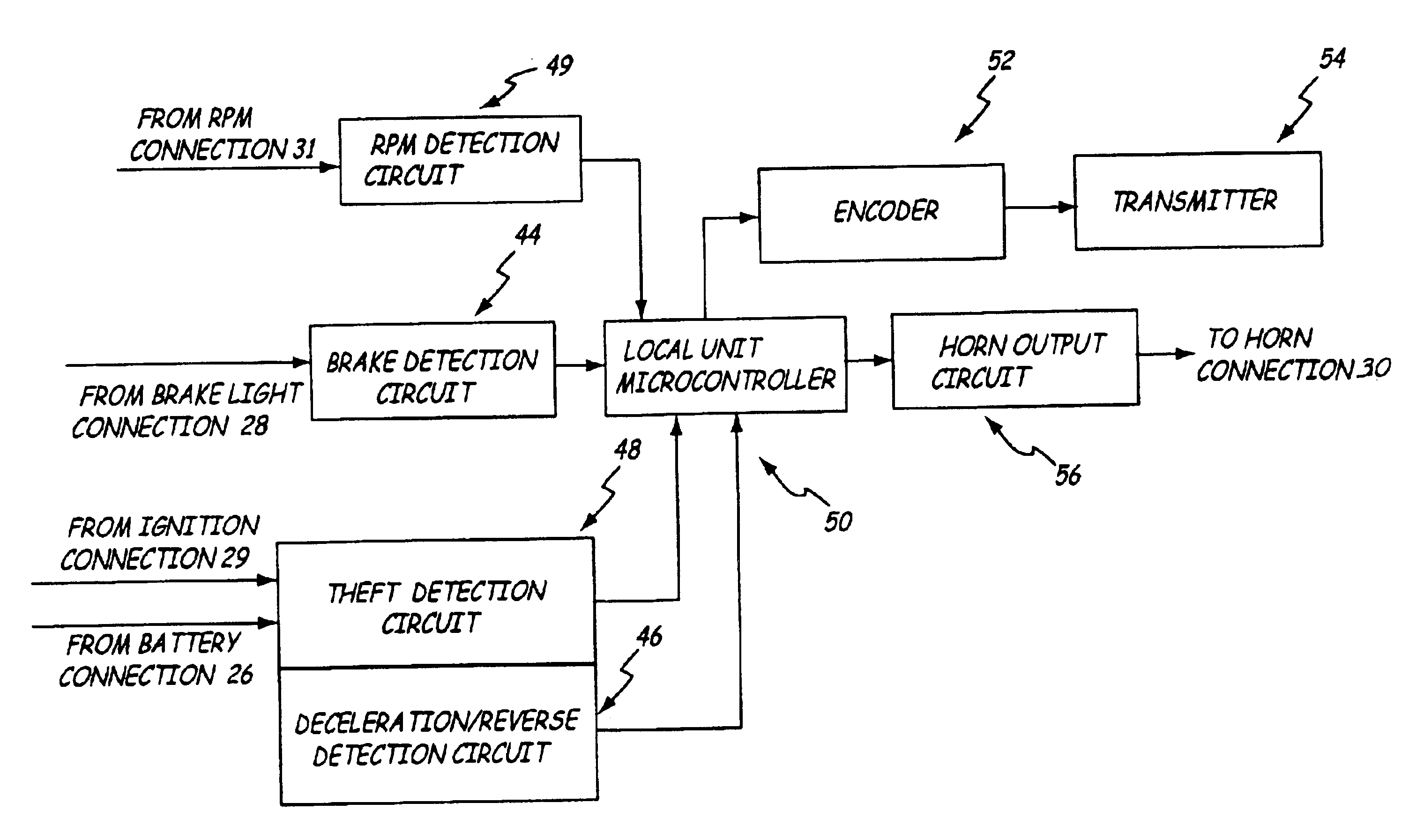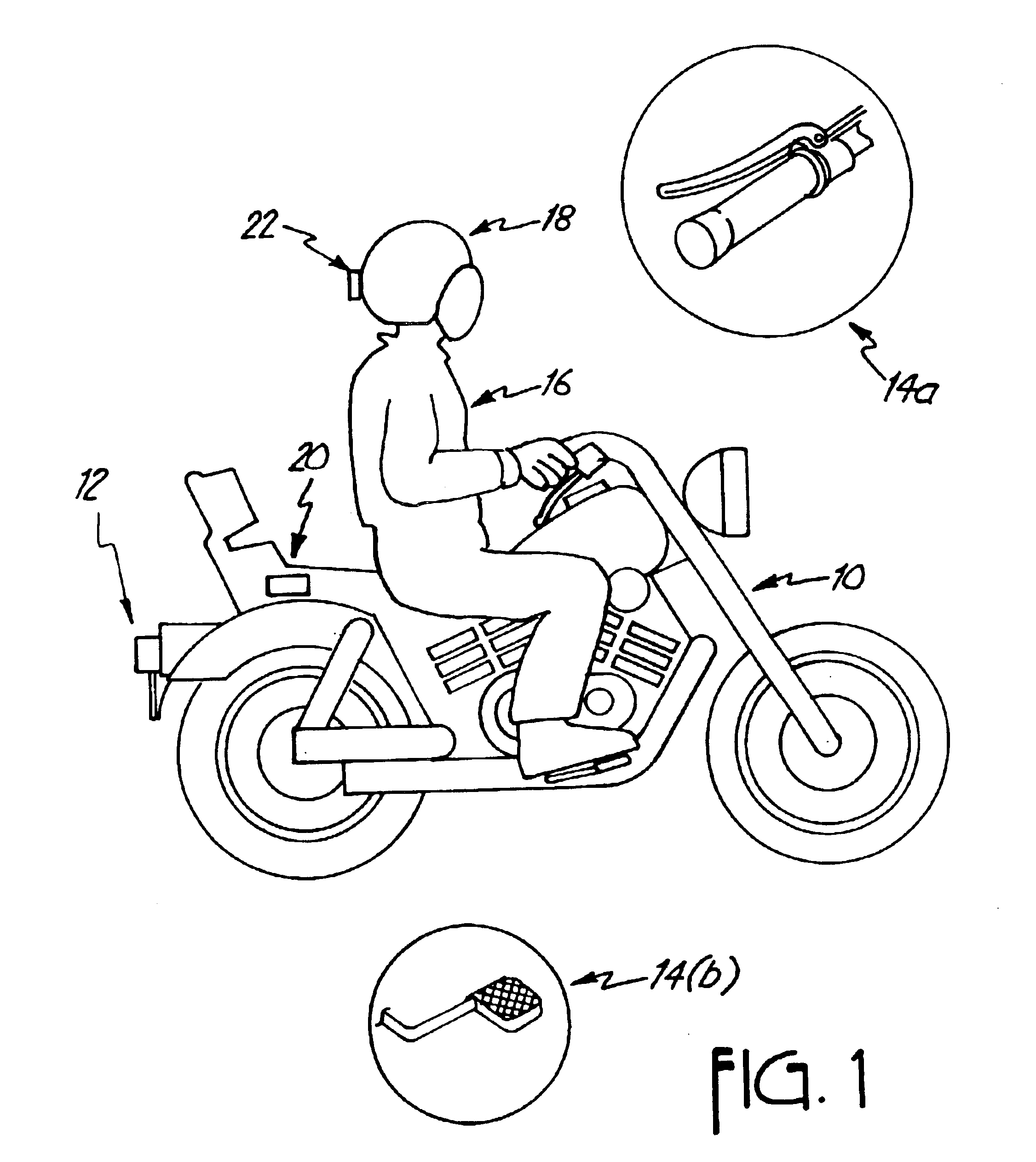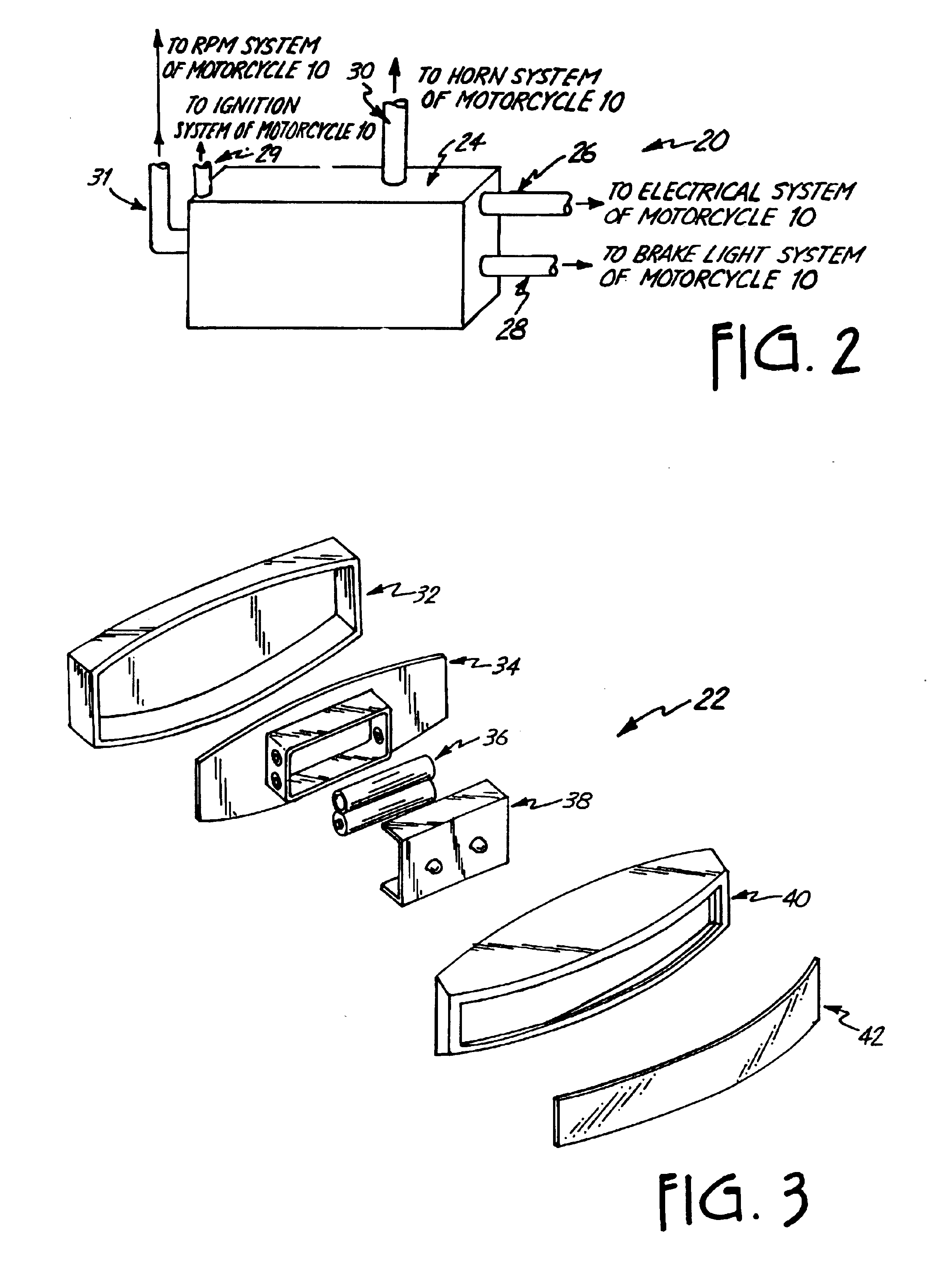Vehicle safety system
a safety system and vehicle technology, applied in the field of vehicle safety systems, can solve the problems of motorists at potential risk of property damage, injuries, even fatalities, deceleration, and increase, and achieve the effect of enhancing the safety of boaters in the area
- Summary
- Abstract
- Description
- Claims
- Application Information
AI Technical Summary
Benefits of technology
Problems solved by technology
Method used
Image
Examples
first embodiment
[0089]FIGS. 5a and 5b are block diagrams of remote unit 22 and local unit 20, illustrating an additional concept of the present invention. The additional concept includes the use of a two-way voice communication system that incorporates many of the components of local unit 20 and remote unit 22. It is a hands-free voice communication system that allows riders to talk to each other when each rider wears a helmet 18 incorporating a remote unit 22.
[0090]As illustrated in FIG. 5a, the two-way voice communication system includes microphone / earpiece 61, which is worn by motorist 16 under helmet 18, and is a conventional microphone / earpiece system, such as a cellular phone microphone and earpiece headset. Microphone / earpiece 61 plugs into remote unit 22, connecting microphone / earpiece 61 to remote unit microcontroller 64 for sending and receiving signals to and from remote unit microcontroller 64. When motorist 16 speaks into the microphone of microphone / earpiece 61, a corresponding signal...
second embodiment
[0158]For an example of an application of the present invention, assume that vehicle 68 decelerates without the brakes of vehicle 68 being activated. Deceleration detection circuit 154 measures and calculates the corresponding inertial forces, and sends signals regarding the inertial forces to local unit microcontroller 116. Local unit microcontroller 116 then compares the inertial forces to the deceleration force threshold. If vehicle 68 is decelerating fast enough so that the inertial force is greater than the deceleration force threshold, then local unit microcontroller 116 produces an output to encoder 118 that vehicle 68 is decelerating. Encoder 118 then digitally encodes the signal and sends the encoded signal to transmitter 120. Transmitter 120 then emits the encoded signal from local unit 74 as a wireless transmission.
[0159]The wireless transmission is intercepted by receiver 122 in both left remote unit 76 and right remote unit 78, and decoded by decoder 124 in each remote ...
third embodiment
[0197]For an example of an application of the present invention, assume that boat 128 decelerates rapidly. Deceleration detection circuit 164 measures and calculates the corresponding inertial forces, and sends signals regarding the inertial forces to local unit microcontroller 168. Local unit microcontroller 168 then compares the inertial forces to the deceleration force threshold. If boat 128 is decelerating fast enough so that the inertial force is greater than the deceleration force threshold, then local unit microcontroller 168 produces an output to encoder 170 that boat 128 is rapidly decelerating. Encoder 170 then digitally encodes the signal and sends the encoded signal to transmitter 172. Transmitter 172 then emits the encoded signal from local unit 134 as a wireless transmission.
[0198]The wireless transmission is intercepted by receiver 174 in remote unit 136 and decoded by decoder 176. The decoded signal is then sent from decoder 176 to remote unit microcontroller 178. Re...
PUM
 Login to View More
Login to View More Abstract
Description
Claims
Application Information
 Login to View More
Login to View More - R&D
- Intellectual Property
- Life Sciences
- Materials
- Tech Scout
- Unparalleled Data Quality
- Higher Quality Content
- 60% Fewer Hallucinations
Browse by: Latest US Patents, China's latest patents, Technical Efficacy Thesaurus, Application Domain, Technology Topic, Popular Technical Reports.
© 2025 PatSnap. All rights reserved.Legal|Privacy policy|Modern Slavery Act Transparency Statement|Sitemap|About US| Contact US: help@patsnap.com



